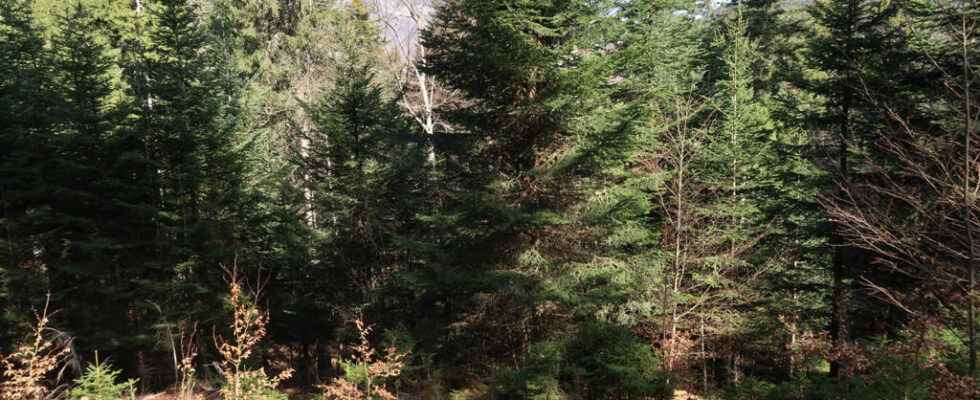In France, the summer of 2022 marked the spirits: unprecedented heat waves added to a severe drought. More than 65,000 hectares have burned in the country according to the European satellite monitoring system, a record. The government is considering a strategy to adapt forests to climate change and its consequences.
Dry ground, high temperatures, a single spark and it’s a blaze. Forest or crop fires are the most visible and spectacular consequence of climate change as far as vegetation is concerned. These areas affected by large fires promise to extend more and more to the north of the country, according to forecasts by the IPCC, the UN’s international expert group on climate. By 2050, half of France will be affected.
Fires, Mortality and Diseases
But this is not the only impact of global warming, other signs are already visible. Valérie Metrich-Hecquet, director general of the ONF, the National Forestry Office, explains that between 2017 and 2022 we went from 5% to 25% of trees dying. ” This multiplication by five of the woods that wither in four years is a phenomenon that had never been observed in the past. “Scientists believe that” no doubt, at the end of the century, half of the territories occupied by large French species such as beech, fir, spruce will be made fragile and therefore only identical renewal will no longer be possible at coming “.
In other words, forests will radically change their face. Some species will not survive in several regions or will be so weakened that the trees will be more susceptible to disease. This last phenomenon is already observable in the northeast quarter of the country with the spruce weakened after several years of drought and which is ravaged by an insect, the bark beetle.
► To read also: Kanop, the AI of forests
“mosaic” forest
It is therefore essential to help forests adapt. ” In Earth’s history, the climate has already changed significantly and the forests have not disappeared. “recalls Albert Maillet, Director of Forests and Natural Risks at the ONF. The difference with today is that this was done over long periods of time. There, we are on very short periods since climate change is linked to human activity. »
Forest managers are therefore trying to anticipate future development trends over the coming decades.
” We prepare for it first by diversifying as much as possible “, he explains. The idea is to avoid monocultures and rather to vary the species. If a species proves to be more resistant to climate change, it will then be able to develop and the forest cover will be preserved. ” Second, we try to favor forest species that we think will have better resilience to future climates. », continues Albert Maillet. The ONF has undertaken to plant Mediterranean species further north. Aleppo pines, maritime pines and cedars are indeed beginning to rub shoulders with fir trees and beeches.
► Also to listen: Save the forest
Another strategy, the clean cut. Whole sections of forests have already been cut down to prevent the spread of disease, including spruce forests affected by the bark beetle. But in all, this support plan for the adaptation of forests only concerns 8,500 hectares, out of 1.7 million hectares of state forests managed by the ONF. A drop of water, regrets Julia Ouallet, campaign manager for the environmental defense NGO Canopy living forests. ” The mosaic forest is commendable, but it is not enough. The ONF only manages state forests and so-called “public” forests, but that is only roughly 25% of French forests. Let’s not forget also nearly 3.6 million owners “. It is difficult to coordinate action, so she believes that public and private managers must be given the means to invest for the entire forest. She regrets that in 20 years, the ONF has lost nearly 5,000 jobs, even if the workforce has now stabilized, at least for this year.
New forestry strategy
Over the past year, there seems to have been an awareness of the need to improve fire prevention, the adaptation of forests and their preservation. Forests make it possible to store atmospheric CO2 and therefore limit global warming. Protecting them is, in the words of the government itself, a “ priority site of ecological planning, the major program launched by the executive for the country’s transition and to be able to meet its climate commitments.
A week ago, in a video on social media, Emmanuel Macron announced that “ by March-April he wanted to see finalize the forestry strategy “replanting” a billion trees to improve carbon sinks, as well as the renewal of 10% of French forests.
► Also to listen: Forest: should we change the model?
This digit ” one billion trees planted is probably unrealistic “, believes Julia Ouallet, and is part of political communication. However, it is true that the absorption of CO2 by vegetation has collapsed in France since 2013: they go up in smoke or are dried out and no longer play this role. But ” Above all “, this strategy must make it possible to ” maintain this carbon sink capacity, or even increase it pleads the activist, by reducing mechanization and large machinery in the forest which compacts the soil, by diversifying the species and respecting biodiversity or even by sometimes leaving the forests to evolve on their own when possible “.
